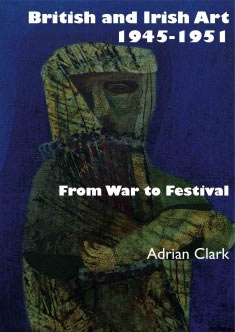 Published in 2010, this book radically re-examines a crucial period of modern British and Irish art, from a historical viewpoint. It demolishes the idea that control of the art world passed after the War from rich individuals to faceless state institutions. Through detailed analysis of unpublished private letters and manuscripts, the machinations of committees, and contemporary newspaper reports, it emerges that the public school and Oxbridge elite retained its hold upon the levers of power within the new state-run art institutions.
Published in 2010, this book radically re-examines a crucial period of modern British and Irish art, from a historical viewpoint. It demolishes the idea that control of the art world passed after the War from rich individuals to faceless state institutions. Through detailed analysis of unpublished private letters and manuscripts, the machinations of committees, and contemporary newspaper reports, it emerges that the public school and Oxbridge elite retained its hold upon the levers of power within the new state-run art institutions.
By studying the intricate mechanisms whereby artists turned oil on canvas into money – or not – the book explains how artists’ reputations were made or broken. Individual artists discussed include Francis Bacon, Lucian Freud, Henry Moore, John Piper, Graham Sutherland, Gerard Dillon, Robert Colquhoun, Paul Nash and many more. Readers will be startled and intrigued to find how such artists fought to survive amid the network of powerful individuals, critics and gallery owners that controlled their destinies.
To purchase or inquire, CLICK for Paul Holberton (publishers)
British and Irish Art 1945-1951: Contents
- Chapter 1: The Artistic Scene
- The Painters
- Centres
- Groups
- Chapter 2: Selling, Buying and Exhibiting
- Galleries
- Institutions
- Art Schools
- Public Galleries and Museums
- Chapter 3: Private Patronage and Collecting
- Patrons
- Collectors
- Chapter 4: Artists’ Lives
- Money
- The Art Market
- Foreign Trips
- Chapter 5: Artistic Reputations
- Newspapers
- Journals
- Chapter 6: Changing Fashions
- Analysing Reputations
- Chapter 7: The Judgments of 1951
- Planning the Festival of Britain
- Chapter 8: Conclusion
- Appendix: Members of the British and Irish Art Worlds 1945-51
- Part A: Key Individuals
- Part B: Key Individuals in Key Purchasing Institutions
- Part C: Schools Attended
- Part D: Oxford Colleges Attended
- Part E: Cambridge Colleges Attended
- Part F: Key Individuals at Key Public Institutions